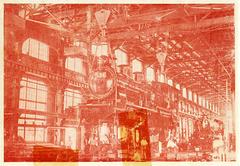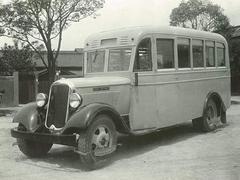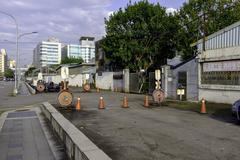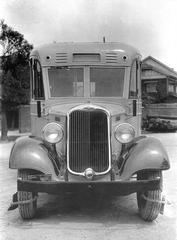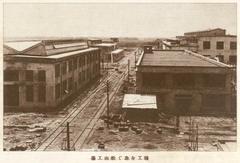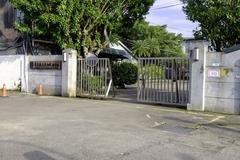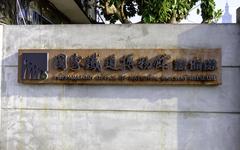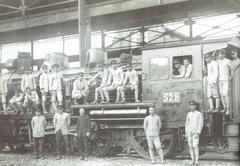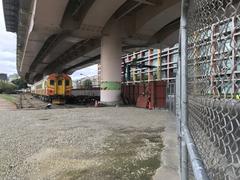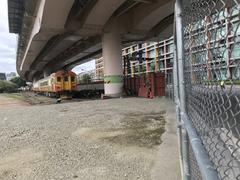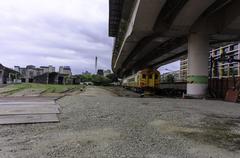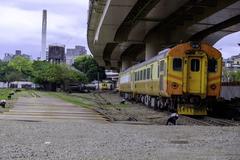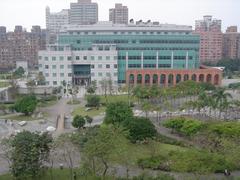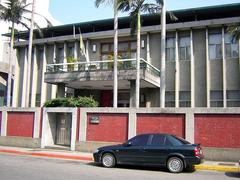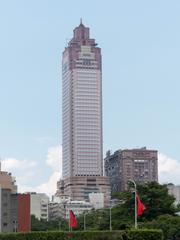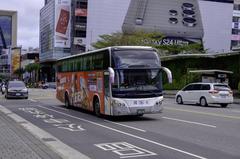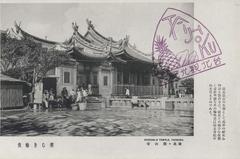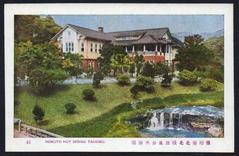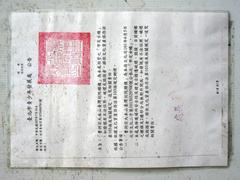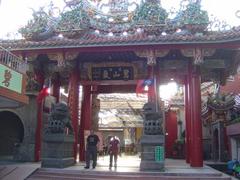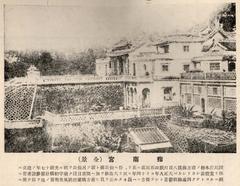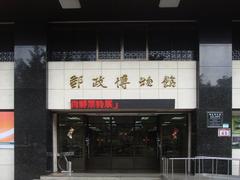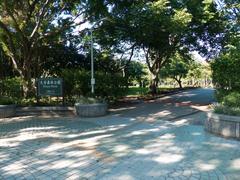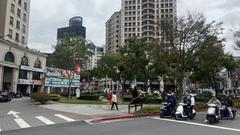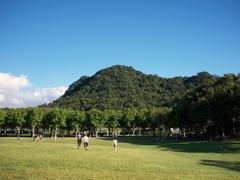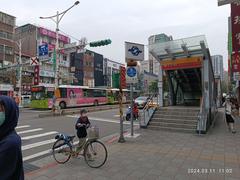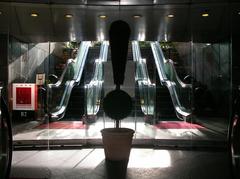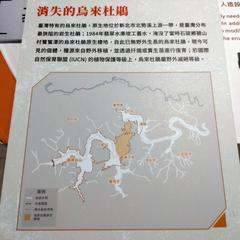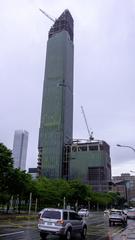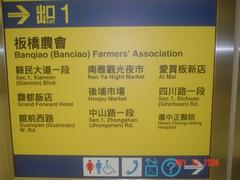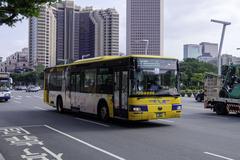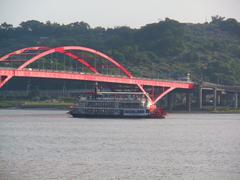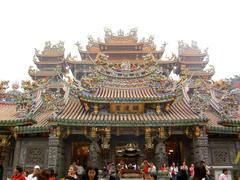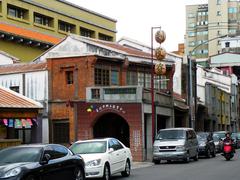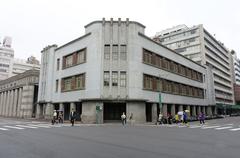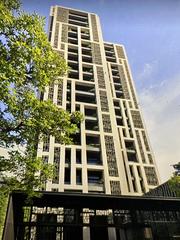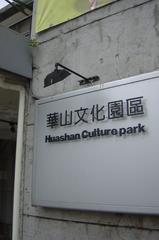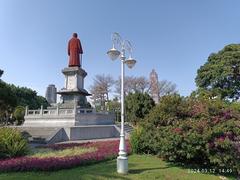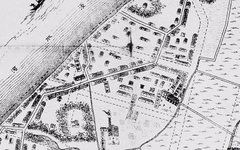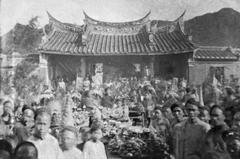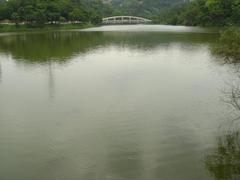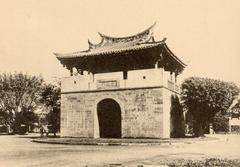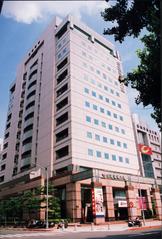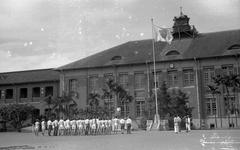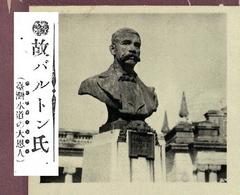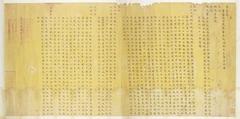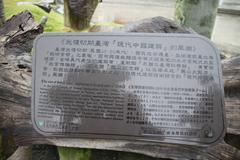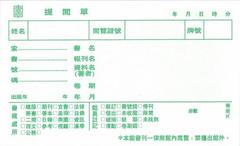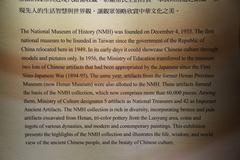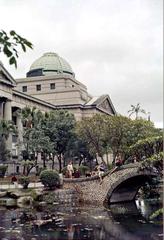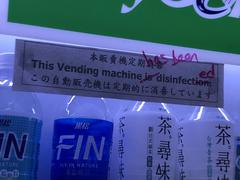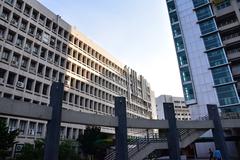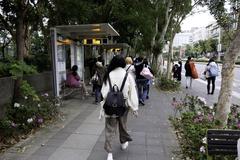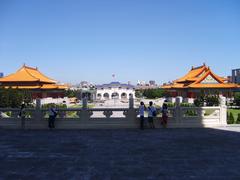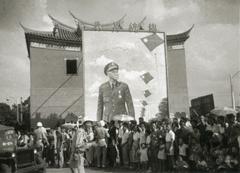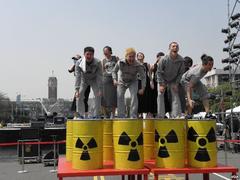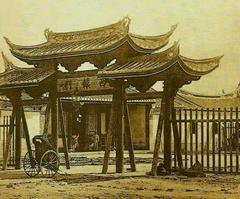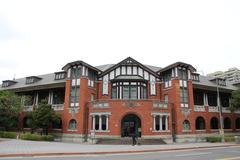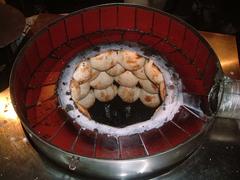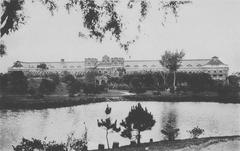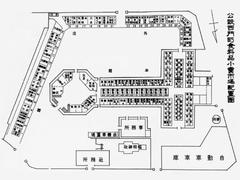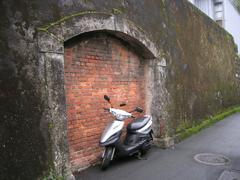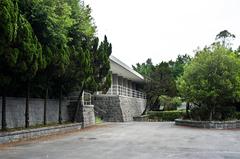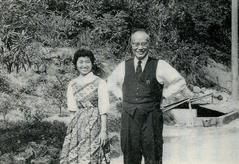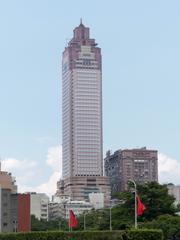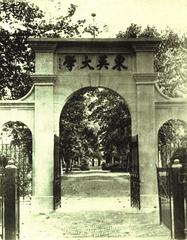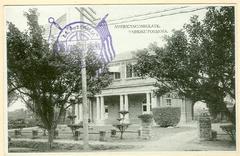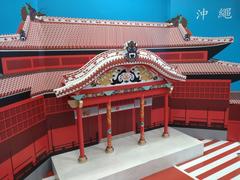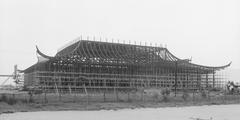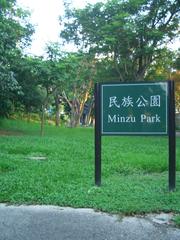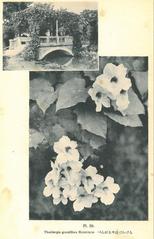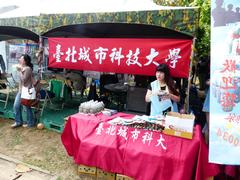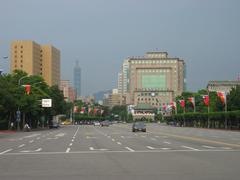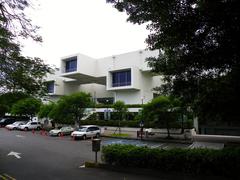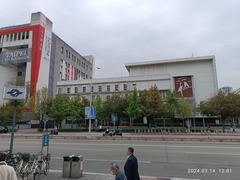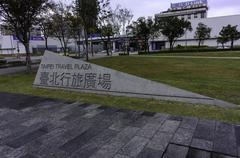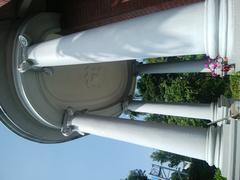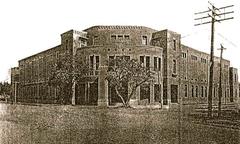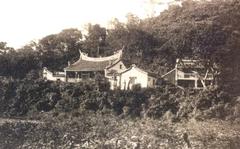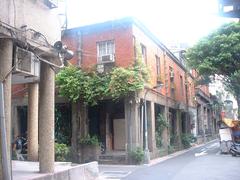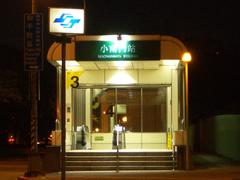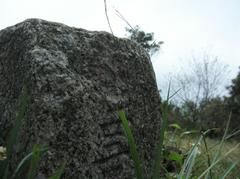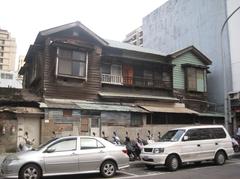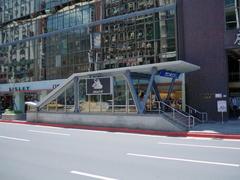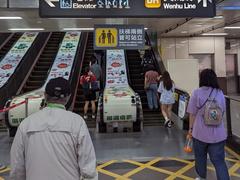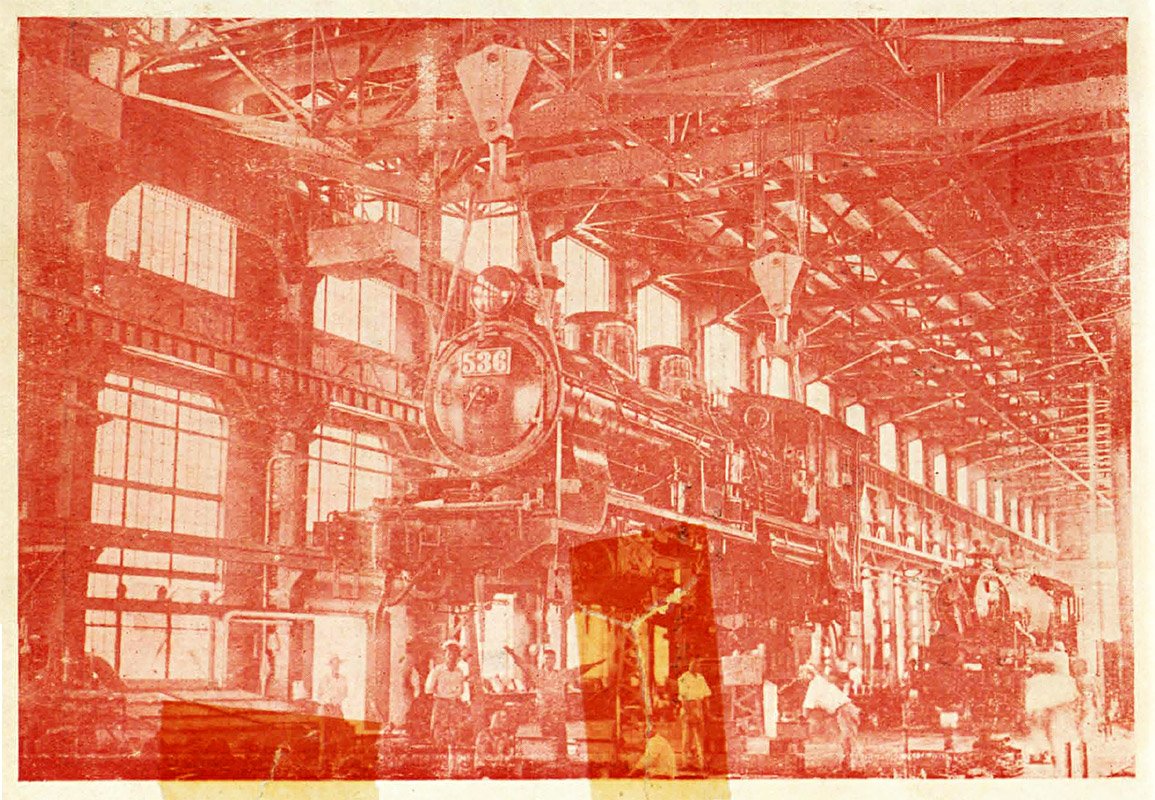
Former Taipei Railway Workshop Visiting Hours, Tickets, and Historical Site Guide in Taipei, Taiwan
Date: 14/06/2025
Introduction
The Former Taipei Railway Workshop is a cornerstone of Taiwan’s industrial and railway heritage. Established in 1935 during the Japanese colonial era, this expansive 16.82-hectare site in Taipei’s Xinyi District was once the island’s largest and most advanced railway maintenance facility. Its architectural features—including a 168-meter-long assembly shed and a rare Japanese-style bathhouse—reflect a unique blend of Japanese colonial design and adaptations for Taiwan’s subtropical climate. After ceasing operations in 2012, the site was designated a national historic site in 2015 and is now being transformed into the National Railway Museum (Taiwan English News; GoTeamJosh; APHTRO PDF). Today, visitors can discover authentic industrial spaces, original machinery, and immersive guided tours that unravel the social and technological stories woven into Taiwan’s railway history (Ministry of Culture; National Railway Museum website).
This guide details the workshop’s historical evolution, architectural significance, visitor logistics (including hours and ticketing), accessibility, nearby attractions, and its ongoing transformation into a vibrant museum. Whether you’re interested in heritage, hands-on exhibits, or planning a culturally enriching trip, this article provides everything necessary for a rewarding visit.
Table of Contents
- Introduction
- Historical Evolution and Development
- Architectural Evolution and Restoration
- Visitor Information: Hours, Tickets, and Accessibility
- Cultural and Community Impact
- FAQ
- Practical Tips and Travel Advice
- Nearby Attractions
- Conclusion
- References
Historical Evolution and Development
Origins and Early Construction (1935–1945)
Built in 1935 during the Japanese colonial era, the Taipei Railway Workshop was envisioned as the most advanced railway maintenance facility in Taiwan, reflecting the period’s push for modernization and efficient transportation (Taiwan English News). Its buildings, constructed of brick and steel, included a 168-meter assembly shed, forging shops, a diesel-electric locomotive workshop, and a Japanese-style bathhouse—demonstrating both functional purpose and a focus on worker welfare (APHTRO PDF, p.1).
Post-War Transformation and Role in Taiwan’s Railways (1945–2012)
After World War II, the workshop came under Taiwanese administration and became the central hub for maintaining rolling stock for the Taiwan Railways Administration (TRA). Over the decades, it adapted to new technologies, such as diesel-electric locomotives, and employed thousands, shaping a distinctive labor culture. Yet, by 2012, advances in railway maintenance and changes in operational practices led to its closure (APHTRO PDF, p.1; Taiwan English News).
Heritage Recognition and Preservation Efforts (2012–2019)
Closure brought heightened appreciation for the site’s historic value. In 2015, it was designated a national historic site, ensuring legal protection and spurring comprehensive restoration plans (APHTRO PDF, p.2). In 2019, the Preparatory Office of the National Railway Museum was established to oversee adaptive reuse and public engagement (APHTRO PDF, timeline).
Museum Development and Adaptive Reuse (2019–2025)
The museum’s vision is to create a “living railway museum,” combining heritage conservation with modern exhibition design. Recent milestones include the opening of preview exhibitions in 2023, the scheduled launch of exhibition halls in late 2024, and plans for a public body to operate the museum by 2027. Restoration work preserves original features while incorporating new visitor amenities and interactive exhibitions (APHTRO PDF, p.5; Taiwan English News).
Architectural Evolution and Restoration
Early Design and Japanese Colonial Influence
Construction began in 1918 with phased completion through the 1930s, blending Western and Japanese architectural elements in brick, wood, and reinforced concrete (GoTeamJosh). The design addressed Taiwan’s climate and included termite-resistant techniques.
Wartime and Postwar Changes
World War II bombings targeted the workshop due to its strategic role. Post-1945, the site supported TRA headquarters and adapted to electrification and infrastructure developments, but fell into neglect after 1990 until heritage protections were enacted in 2009 (GoTeamJosh).
Restoration and Adaptive Reuse
Since 2014, restoration has focused on preserving key buildings and integrating modern museum spaces. Features like floating pathways and open circulation reconnect the workshop with Taipei’s urban fabric, enhancing accessibility and public engagement (Archistart).
Visitor Information: Hours, Tickets, and Accessibility
Opening Hours
- General Museum Access: Tuesday to Sunday, 9:00 AM – 5:00 PM. Closed Mondays and national holidays.
- Guided Tours (Main Workshop Site): Wednesdays and Saturdays only, with four scheduled tours weekly. Specific time slots are released monthly on the official website.
Tickets and Admission
- General Admission: NT$100 (for the Railway Department Park); discounts for students, seniors, groups; free for children under 6.
- Former Taipei Railway Workshop Guided Tours: Free, but strictly by advance online reservation—walk-ins not permitted. Tickets are released monthly and fill up rapidly.
- Identification Required: Bring a government-issued ID (Taiwan citizens) or passport/ARC (foreigners).
Accessibility
- Physical Access: Wheelchair ramps and elevators are available in many areas, but some workshop zones remain partially inaccessible due to ongoing restoration. Contact the museum in advance if you require assistance.
- Facilities: Restrooms on-site; no food vendors or gift shop as of June 2025.
Getting There
- By MRT: Nearest stations are Nanjing Sanmin (Green Line), Taipei City Hall, and Sun Yat-sen Memorial Hall; all within walking distance.
- By Bus: Bus #669 stops at Living Mall, directly across from the workshop.
- By Car: Limited parking; public transport is strongly recommended.
Cultural and Community Impact
Symbol of Modernization
The workshop embodies Taiwan’s modernization, reflecting both technological innovation and the social histories of its workers (GoTeamJosh). Its transformation into a museum preserves collective memory and fosters community identity.
Educational and Interactive Spaces
Exhibits cover Taiwan’s railway history, feature detailed station models, and include hands-on activities for children and families. Special events, workshops, and open days foster public engagement and lifelong learning.
Urban Integration
The site’s redevelopment includes public pathways, retail, and open spaces, making it a vital community hub and promoting connections between city districts (Archistart).
FAQ
Q: What are the visiting hours?
A: General museum hours are Tuesday to Sunday, 9:00 AM to 5:00 PM. Guided tours of the main workshop are available only on Wednesdays and Saturdays—check the official website for time slots.
Q: How do I get tickets?
A: General admission can be purchased on site. Guided workshop tours are free but require advance online reservation.
Q: Is the site wheelchair accessible?
A: Most areas are accessible, but some historic sections may have limited access.
Q: Are guided tours available in English?
A: Most tours are in Mandarin; English tours are gradually being introduced.
Q: Can I take photos?
A: Yes, but restrictions apply in certain areas—watch for posted signs.
Q: Are children welcome?
A: Yes, but children must be supervised due to the industrial environment.
Practical Tips and Travel Advice
- Book Early: Workshop tours fill up quickly; reserve as soon as bookings open.
- Bring Valid ID: Required for entry.
- Dress Comfortably: Wear sturdy shoes and weather-appropriate clothing.
- Check the Weather: The site has both indoor and open-air areas.
- Stay Updated: Refer to the National Railway Museum website for latest information.
Nearby Attractions
- Songshan Cultural & Creative Park
- Sun Yat-sen Memorial Hall
- Taipei 101
- Taipei Botanical Garden
- National Taiwan Museum
These sites offer additional cultural and recreational opportunities, all easily accessible from the workshop’s central Xinyi District location.
Conclusion
The Former Taipei Railway Workshop is one of Taiwan’s most significant industrial heritage landmarks. Its transformation into the National Railway Museum offers visitors an immersive journey through the island’s railway and modernization history, supported by thoughtful restoration and engaging exhibitions. With reservation-only tours, free or affordable admission, and excellent accessibility, it is a must-visit destination for anyone interested in Taiwan’s past, present, and future. For optimal experience, plan your visit in advance, check current schedules, and explore nearby Taipei attractions.
References
- Taiwan English News - Taipei Railway Workshop to be Redeveloped as Railway Museum
- APHTRO PDF - Taiwan Railway Industrial Heritage Report
- GoTeamJosh - Exploring Taipei’s Former Railway Workshop
- Archistart - Bifurcate: Rethinking Taipei Railway Museum
- Ministry of Culture Taiwan News Release
- National Railway Museum Official Website
- Catherine Lee Blog - Taipei Railway Workshop Insights
- Taipei Railway Workshop Wikipedia
